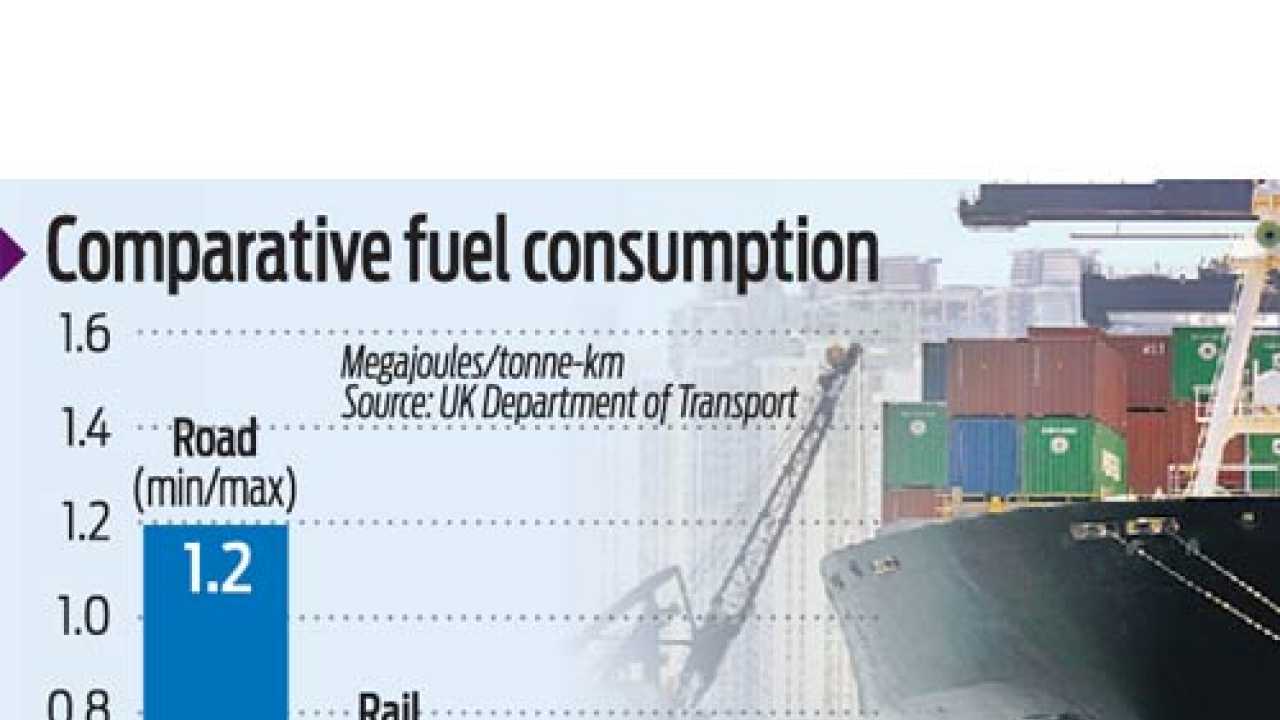
A senior officer of the Indian Navy once described the government’s attitude to sea and water transport as being very limited. It was as if the ‘land-locked’ government suffered from ‘sea-blindness’. The government’s approach towards water transport during the past seven decades only underscores this folly on the part of the country’s policy-makers. Consider the basic facts
1. Water transport is cheaper than any other form of transport. If road transport costs Rs 12 per tonne/per km, water transport would cost under Rs 3 (see chart).
In India, given the potholed roads, and the interminable delays at check posts, road transport costs could be around Rs 15 if not Rs 20. In fact, road transport is far more expensive than rail transport, which, in turn, is costlier than water transport.
2. India has a 7,517 km coastline. This is akin to a 20 lane highway as a gift from nature. It did not need to be built, and requires little maintenance. Yet in spite of this, very little of India’s annual consumption of 60 million tonne of high speed diesel gets used by water transport. Instead, 60% of the fuel used by the transport sector gets used up by road transport, the rest shared by rail and water transport.
3. India has seven major rivers (Indus, Brahmaputra, Narmada, Tapi, Godavari, Krishna and Mahanadi) along with their numerous tributaries,. They span over 20,000 km in length. A few boats do ply along some rivers, but nothing compared to the vision for water transport unveiled over two decades ago.
Sadly, India’s focus has always been on road and rail transport. Like elsewhere, the country has a penchant for choosing the most expensive solution (whether it is nuclear power over renewable power, or road transport over water). The plan for interlinking all rivers remains on paper gathering dust.
The paradoxes are there for almost everyone to see. India has a law for ship movement. It also has a law for fishing boats. But it has no omnibus law for boats which can move up and down a seashore to pick up or offload goods or people along several destinations along the way. It does not have a plan for building jetties every 50 km of the coast. Nor does it have any law for leisure boating either.
Ask policymakers “Why?”, and they will immediately come up with the standard lame excuse that it could be a security risk. Preposterous! Ask any pundit on security, and he will tell you that a populated and active coastline is the best solution for security.
More eyes on the ground are better than an unused coastline, where guards tend to get sleepy because little is expected to happen there.
Look, for instance, at the UK. It has a coastline 11,073 km long. But go to Portsmouth, to Glasgow, both major naval dockyards, and you will see leisure and cargo boats weaving in and out through frigates and other warships docked there. The activity keeps security personnel on the alert, tracking the movement and the ownership details of each vessel moving in and out. But, more interestingly, coastal business alone, in 2005, earned the UK revenues in excess of £4 billion.
Thus water transport saves on imported fuel, because it is a cheaper mode for moving people and goods. Plus, remember that boats also need fuelling and maintenance; the more the number of docking stations, the more the potential for labour and business.
Docking stations need kiosks that sell a variety of paraphernalia — for eating and drinking, for fishing, for fuelling and maintenance, and even for relaxation. Hotels and entertainment centres come up there. Thus you promote GDP growth, and cut oil import bills. But for that, you need a government with a vision, right?